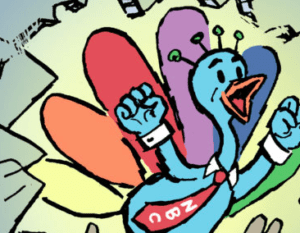 “The Sell Sider” is a column written by the sell side of the digital media community.
“The Sell Sider” is a column written by the sell side of the digital media community.
Today’s column is written by James Murphy, vice president of programmatic at RhythmOne.
The only way programmatic will ever truly take off is if premium publishers come to the table with their entire video media inventory available for monetization.
Programmatic spending will represent 55% of the total display ad market in 2015, up 137% from last year, according to eMarketer. Many expect growth to continue or even accelerate in 2016.
This shift toward programmatic has the potential to democratize the video media-buying and pricing landscape. With advances in targeting and data overlays, exchanges are gradually transforming from offering cheap remnants to providing premium performance, minus the price inflation.
They are becoming the Gilt of smart media planning and buying – a marketplace for desirable demand – and performance-driven pricing of video inventory across a spectrum of placements.
Changing The Rules
Although industry dynamics favor this transformation, challenges remain. With video inventory selling at low, remnant rates, it’s still a seller’s marketplace. Publishers can essentially define their own value, rather than demand within the marketplace. Big data is beginning to level the playing field, enabling smart targeting to help advertisers find “premium” audiences at lower costs.
At the same time, the relatively small number of deals made via programmatic direct and private marketplaces is poised for an upswing, although the open exchanges will still account for the lion’s share of deals.
Premium publishers can help change the rules for video in the programmatic space to truly accelerate and equalize the opportunity. They control the video placements that buyers want but have historically forced them to purchase those placements in a traditional, paper-based IO format.
As we continue to see the shift toward audience targeting and the advancements around data, premium content will be defined in other ways. Programmatic direct is really the same insertion order business to which publishers are accustomed, except advertisers no longer need to make a phone call or send a fax. They can get a deal done in just a few clicks.
Normalization And The Positive Future State
At the end of the day, it will be the advertisers that drive this change. By almost all estimates, digital video ad spending in the United States is expected to grow by double-digit percentages year over year for the foreseeable future.
Advertisers, especially in industries such as retail and automotive, lead this demand and are taking advantage of the new normal of second screen and cross screen. Creative shops are also stepping out of the TV comfort zone to develop ads that are unique to the medium in which they are being served, driving ROI.
This will ultimately put pressure on publishers to make more inventory available in a scalable manner – inventory that is priced based on its true market value.
Democracy Is Near
I believe video, especially mobile video, will help normalize spending across the programmatic publisher base. While there will still be a place for high-impact ad inventory, as comfort and experience with programmatic increases, it will likely lead instead of follow.
Once programmatic direct takes off, premium publishers can speak to agencies directly through programmatic pipes. This becomes a better experience for advertisers and brands, orienting the future toward growth and scalability.
It is one of those game-changing shifts we see in every industry from time to time – a shift that can drive obsolescence if publishers insist on clinging to outdated notions of “premium.”
No longer is it about where you’re seen, but with whom you’re seen.
Follow RhythmOne (@RhythmOneUS) and AdExchanger (@adexchanger) on Twitter.












